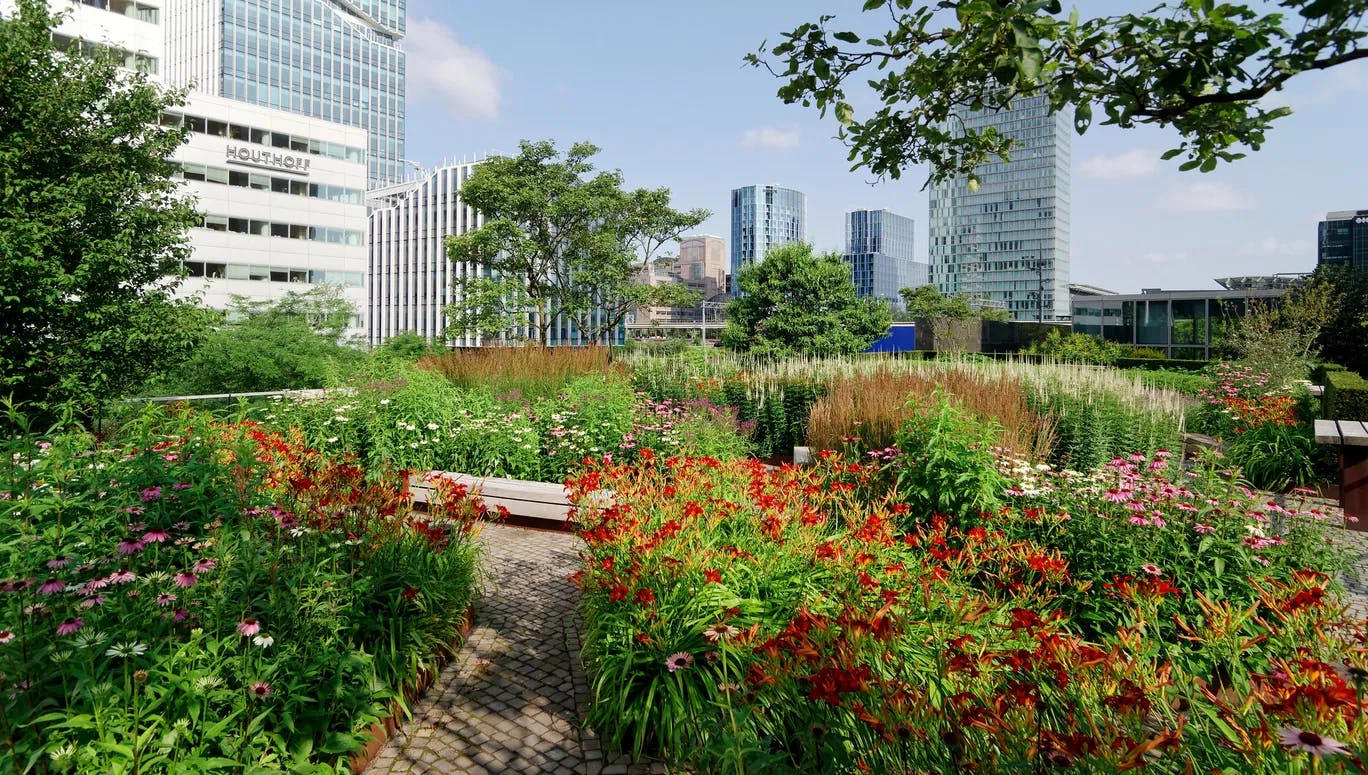
5 eco-friendly initiatives reshaping urban living in the Amsterdam Area
Changing the landscape of urban living
Amsterdam is known for many things, but what surprises people most often when they come to the city is the amount of nature that is incorporated into the urban landscape. The importance of green space is reflected in municipal policy, with efforts to respond to challenges such as overcrowding, changing lifestyles, and climate change.
These policies, along with grassroots efforts by sustainably-minded individuals and businesses, have helped put the Amsterdam region on the map when it comes to reshaping how we live in urban areas. Below are 5 initiatives that are contributing to more sustainable future for all:
Smart ‘blue-green’ roofs mitigate flooding and lower temperatures
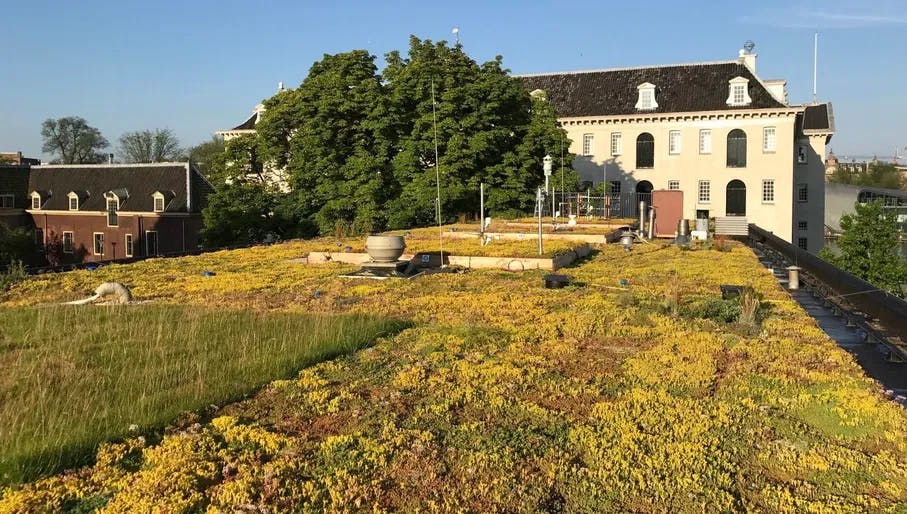
In the face of rising temperatures and extreme weather, Amsterdam is turning to the concept of 'blue-green' roofs to help manage urban flooding and reduce peak temperatures. These roofs combine a water retention system with a top layer of vegetation to not only collect rainwater, but reduce air temperature and boost biodiversity.
Since 2018, the city has collaborated with Resilio to install ‘smart’ blue-green roofs in some of the city’s most flood prone neighbourhoods. These roofs include a digital sensor that can respond to seasonal fluctuations and anticipate incoming rainfall. A study conducted on Resilio roofs found they could capture up to 97% of extreme precipitation — compared to a conventional green roof which typically captures around 12%, and a conventional blue-green roof which captures around 50%.
The sensor’s ability to estimate the best time to store water also helps these roofs transform into drought-resistant environments where indigenous plants can flourish, helping attract a wider array of wildlife and insects.
The world's first fully circular floating neighbourhood
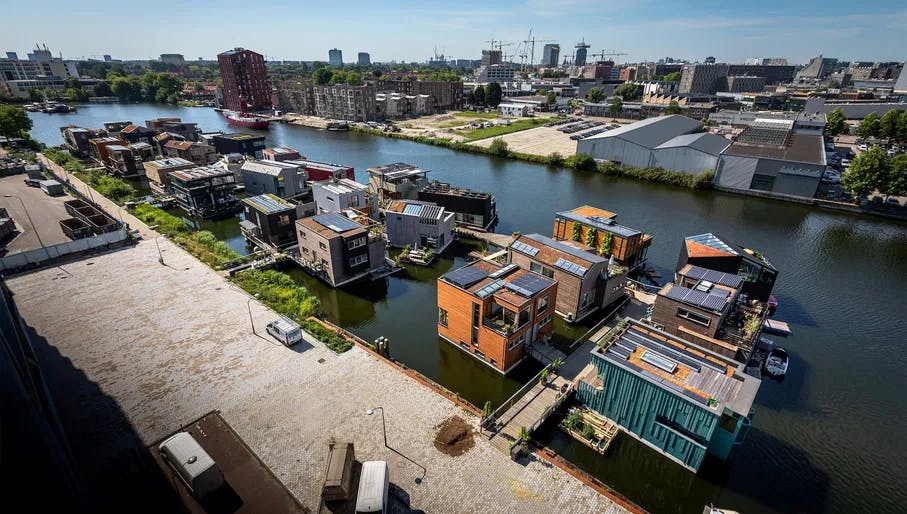
Just north of Amsterdam’s city centre, the Schoonschip (clean ship) neighbourhood has been garnering international attention. This floating residential area was 15 years in the making, and is an embodiment of circular and sustainable living.
The name comes from the Dutch saying ‘schoon schip maken’ which means to make a clean sweep and start fresh. In this neighbourhood, circular technologies enable energy self-sufficiency, but it’s the strong sense of community that helps it flourish. Residents share everything from electric cars and cargo bikes to a joint system for water purification and electricity.
Each sustainably constructed house is equipped with its own solar panels and battery. These are all connected to each other via a network, so residents can moderate their usage and share energy with each other. This experiment in connecting circular practices to daily living has become an international example of what the future could look like.
Artificial reefs to support underwater biodiversity
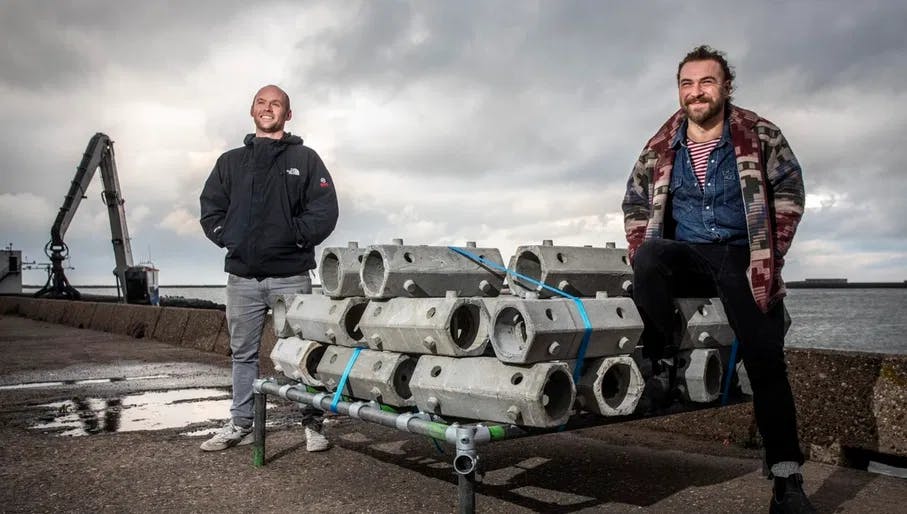
With the expansion of offshore wind farms in the North Sea and global depletion of marine life, efforts to protect aquatic habitats and promote underwater biodiversity are intensifying. One company aiming to address this problem with a man-made microhabitat solution is Amsterdam-based ReefSystems.
ReefSystem’s artificial reefs stimulate underwater biodiversity and improve the health of oceans by providing food, shelter and breeding ground for a wide variety of fish, crustaceans and shellfish. Constructed out of biodegradable materials, these habitats have shown to be effective in promoting organic growth that attracts aquatic life, and are being continuously studied to assess the most effective installation.
Their most recent project in collaboration with the Port of Amsterdam, Rijkswaterstaat and Wageningen University & Research (WUR), involves installing 3 artificial reefs at different locations in the North Sea Channel. With this project artificial habitats will be created in salt, brackish and sweet water and monitored closely by scientists to see how life develops underwater.
Insect hotels are helping protect pollinating insects
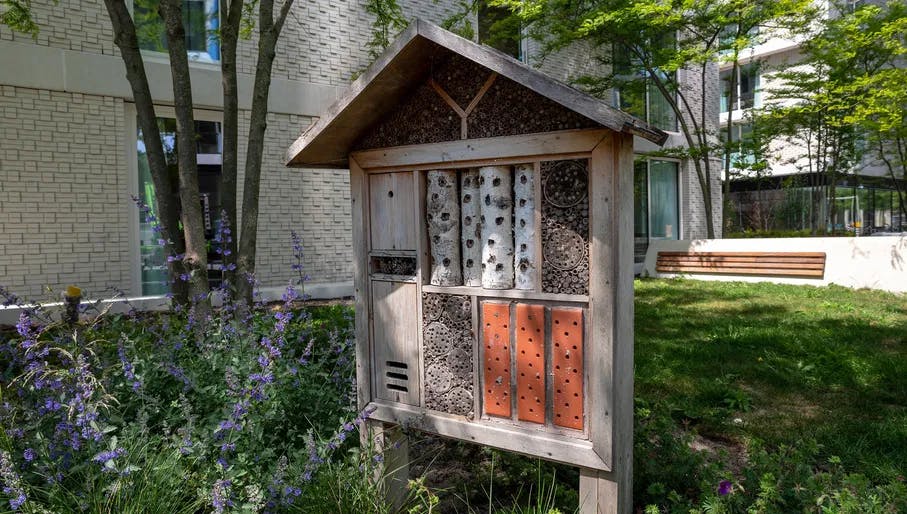
With 80% of all food crops reliant on pollinating insects, actions to increase these populations are vital to ensuring the future of food production. Since 2018, the Amsterdam region has actively invested in reviving the pollination population by implementing several solutions focused on creating food and nesting opportunities for pollinating insects such as bees. These include converting half of all public space to native plants and wildflowers, installing ‘honey highways’ along rail, road, and waterways, and placing ‘insect hotels’ throughout the area.
Data collected in recent years show that these actions are making an impact. According to the National Bee Census, despite global decline the bee population in the Netherlands has remained steady. Amsterdam has even reported a 45% increase in the diversity of wild bee and honey bee species since 2000, including 21 kinds of bees not previously documented in the city.
Turning food waste into energy for plants and people
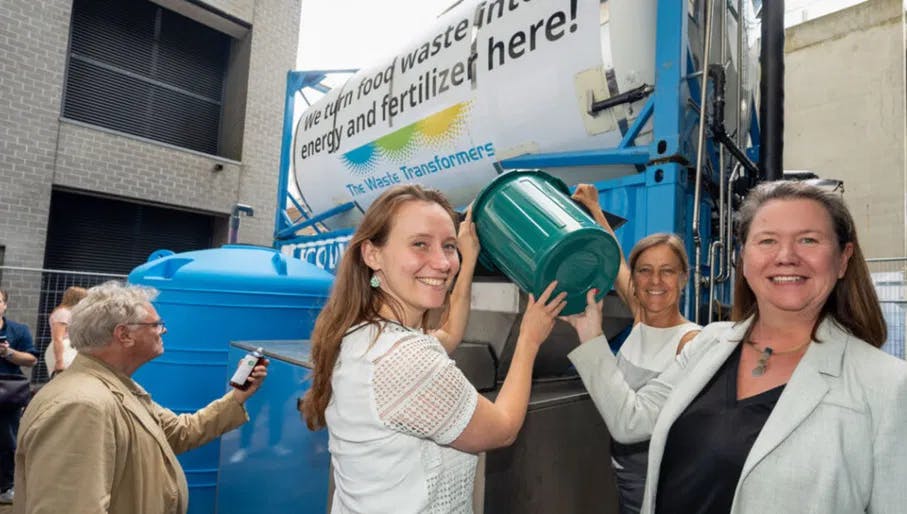
About 1/3 of all food produced is thrown away, accounting for a massive waste of energy and resources. Efforts to reduce food waste and find alternative ways to utilise unwanted food are well underway in the Amsterdam Area, including converting it into green energy. The Waste Transformers is an Amsterdam-based startup that develops and builds small-scale biodigesters that turn food waste into green energy and organic fertiliser.
These 'waste transformers', as the biodigesters are called, convert at least 300kg of food per day into biogas and natural liquid fertiliser. The biogas can then be used to generate electricity to power surrounding homes and businesses. These biodigesters are already being put to use in several areas with high commercial consumption, including the Johan Cruijff ArenA. This project plans to scale up to processing 1800kg of food waste per day, resulting in annual generation of 92,000 kWh of electricity which will be used to co-power the sports stadium. That's equivalent to the amount of energy consumed by 33 Dutch households for a year.
Related articles
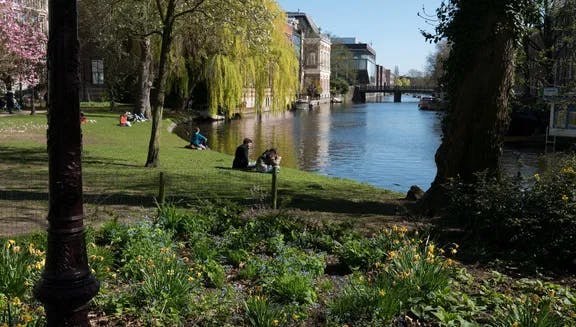
Amsterdam named top 10 green city in the world
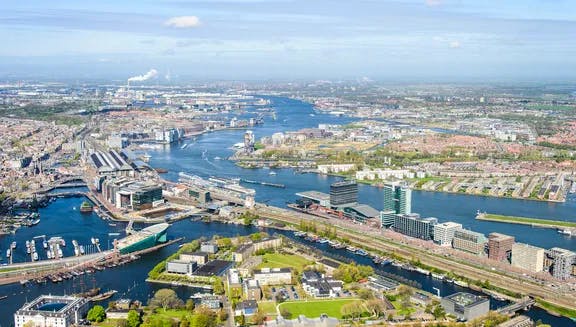
North Holland awarded with Hydrogen Valley status and joins EU sustainability program
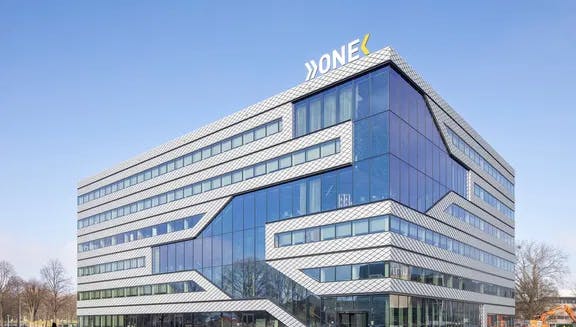
Amsterdam’s Skytree joins major U.S. carbon capture project

Netherlands ranks among world’s top 10 for energy transition progress

Delta Electronics announces EMEA expansion in the Amsterdam Area

Dexter Energy raises €23M to expand AI platform for renewable energy management

Amsterdam’s Moonwatt raises €8M to revolutionise solar energy storage

Amsterdam's Seenons expands to Switzerland to improve circular waste management

